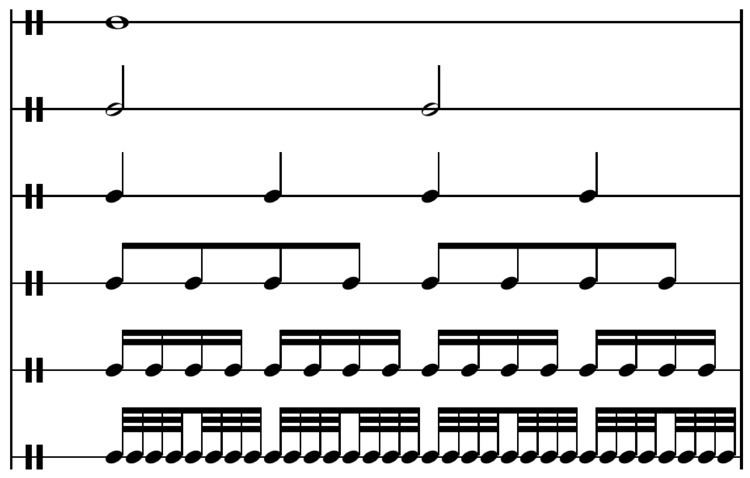 | ||
In music, a sixteenth note (American) or semiquaver (British) is a note played for half the duration of an eighth note (quaver), hence the name. It is the equivalent of the semifusa in mensural notation, first found in 15th-century notation (Morehen and Rastall 2001).
Sixteenth notes are notated with an oval, filled-in note head and a straight note stem with two flags. (see Figure 1). A corresponding symbol is the sixteenth rest (or semiquaver rest), which denotes a silence for the same duration. As with all notes with stems, sixteenth notes are drawn with stems to the right of the notehead, facing up, when they are below the middle line of the musical staff. When they are on or above the middle line, they are drawn with stems on the left of the note head, facing down. Flags are always on the right side of the stem, and curve to the right. On stems facing up, the flags start at the top and curve down; for downward facing stems, the flags start at the bottom of the stem and curve up. When multiple sixteenth notes or eighth notes (or thirty-second notes, etc.) are next to each other, the flags may be connected with a beam, like the notes in Figure 2. Note the similarities in notating sixteenth notes and eighth notes. Similar rules apply to smaller divisions such as thirty-second notes (demisemiquavers) and sixty-fourth notes (hemidemisemiquavers).
In Unicode, U+266C (♬) is a pair of beamed semiquavers.
The note derives from the semifusa in mensural notation. However, semifusa also designates the modern sixty-fourth note in Spanish, Catalan and Portuguese.
The name of this note (and rest) in different languages varies greatly:
